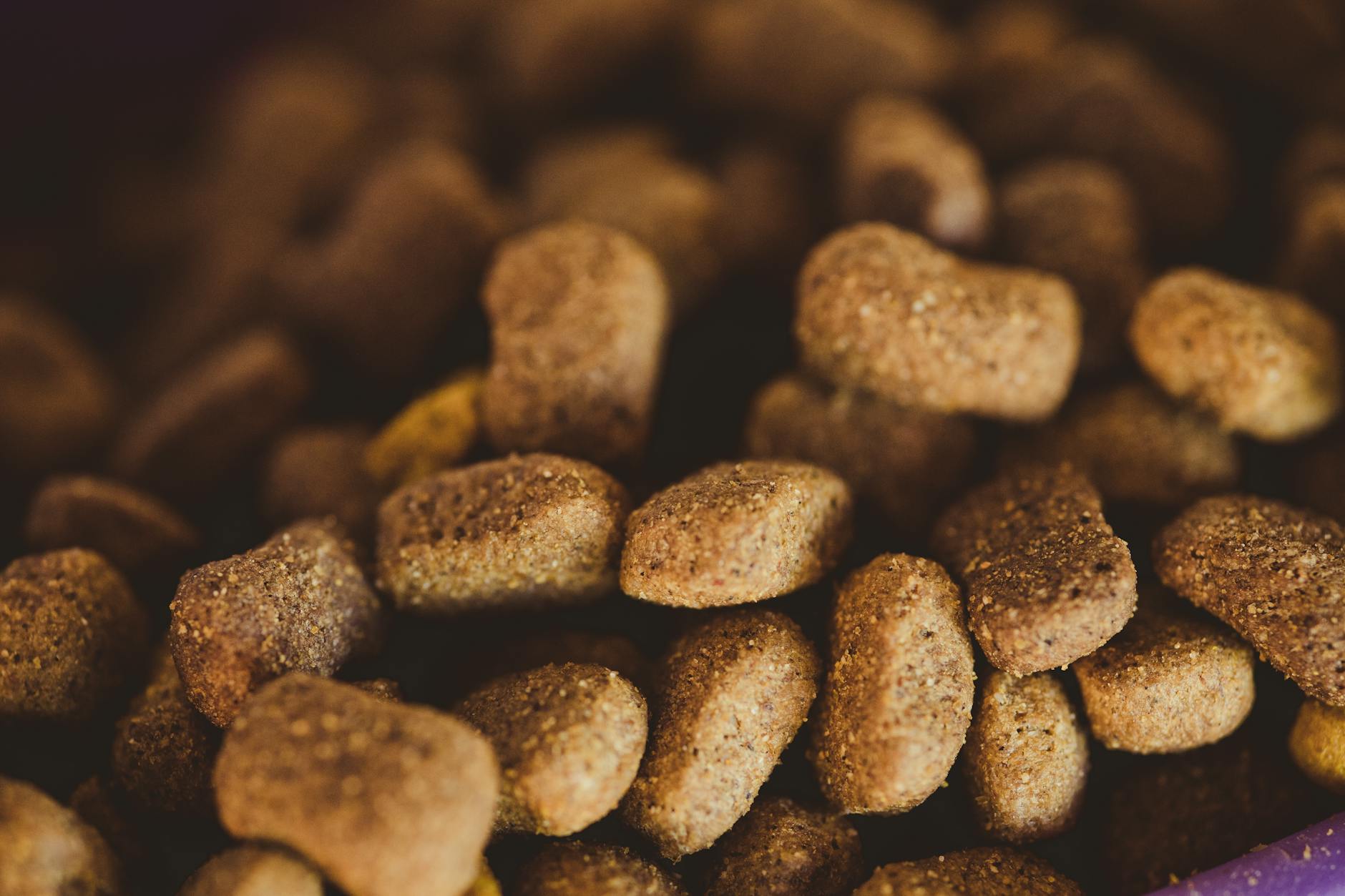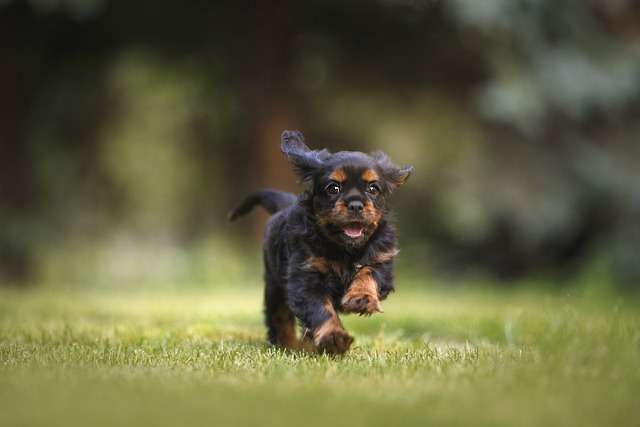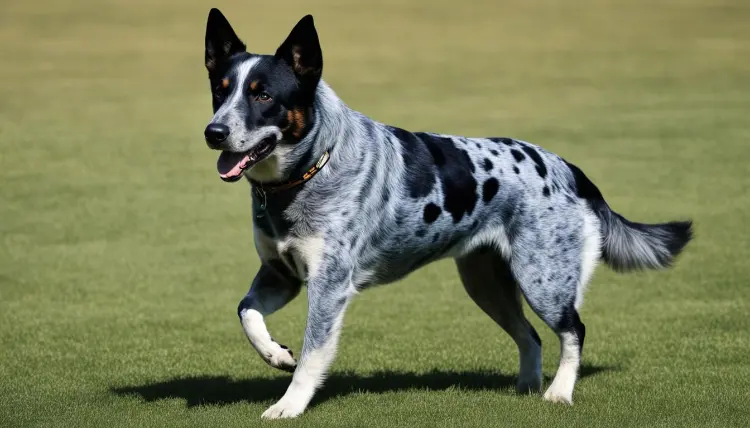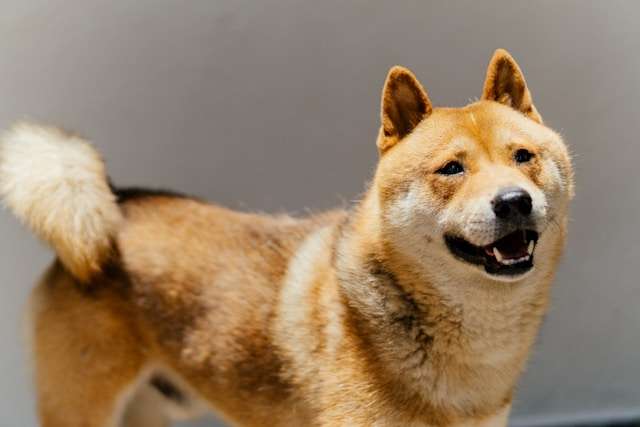Best Dog Food for Sporting Breeds

Sporting dog breeds are built for endurance and high energy. From hunting companions to active family pets, these dogs require the right fuel to keep them going. Feeding them any standard diet won’t cut it—nutritional needs vary significantly, and their food should support their active lifestyles.
Choosing the right dog food helps optimize their energy, health, and overall performance every day. Want to learn what works best for your four-legged athlete? Start by checking out this detailed guide on dog breeds and their needs.
Table of Contents
Understanding Sporting Dog Breeds
If you’ve ever encountered a sporting dog, you know these canines are in a league of their own. With boundless energy, unmatched loyalty, and a readiness for activity, these dogs are a favorite for active households and working environments. Here’s a closer look at what makes sporting dog breeds so unique.
Characteristics of Sporting Dogs
Sporting dogs stand out with their unique blend of traits. They are high-energy animals bred for hunting, retrieving, and working closely with humans. Let’s break down their key characteristics:
- Energy Levels: These dogs are not couch potatoes. They thrive on exercise, running, and engaging activities.
- Exercise Requirements: A daily walk won’t cut it for most sporting breeds. Think hikes, swims, or active games like fetch.
- Temperament: Generally friendly, sporting dogs are known for their even temper and adaptability—making them great companions for families and individuals alike.
They are built to be durable and active. If you’re considering a sporting dog, ensure your lifestyle aligns with their needs for consistent stimulation.
Common Sporting Dog Breeds
Several breeds fall into the sporting group, each with a distinct personality and set of skills. Here’s a look at some popular examples:
- Labrador Retriever
Labradors are versatile, dependable, and eager to please. They excel in various roles—hunting companions, therapy dogs, or family pets. With their love for water and retrieving instincts, they make excellent sporting partners. For more on Labs, check out this comprehensive breed guide. - Golden Retriever
Another family favorite, Goldens, is known for their delightful temperament and intelligence.They are fantastic at tasks requiring obedience and keen retrieval skills. Plus, who can resist their flowing golden coats?

Photo by Shantanu Goyal - German Shorthaired Pointer
GSPs are athletic and agile. Known for their hunting prowess, they are also affectionate and incredibly loyal. Their streamlined bodies and endless stamina make them an excellentchoice for an active family. Learn more about their characteristics here.
These breeds and others in the sporting group require a commitment to their well-being—regular activity, proper nutrition, and lots of love. Want to explore more? This sporting dog breed overview provides additional insights into their roles and nature.
Sporting dogs aren’t just pets—they’re partners. With the proper care, they will remain loyal and hard-working companions for years.
Nutritional Needs of Sporting Dogs
Sporting dogs need more than basic dog food to meet their dietary requirements. Their high activity levels demand specialized nutrition to stay strong, energetic, and healthy. With the right balance of nutrients, these dogs can thrive in their daily activities and recover quickly after exertion.
High Energy Requirements
Sporting dogs burn a lot of calories through constant movement. Whether hunting, running, or retrieving, their bodies need more energy than an average canine. This means higher caloric intake is a must. Think of it as fueling a high-performance race car—it requires premium fuel to keep going.
- Caloric Needs: Sporting dogs typically require diets with a higher calorie density. Foods with 400–600 calories per cup help meet their energy demands.
- Activity-driven Diets: Their food must be nutritionally packed without being overly bulky. Overfeeding can lead to bloating or discomfort.
One factor many dog owners overlook? The importance of feeding timings. Performance dogs benefit from smaller meals spaced throughout the day to maintain energy levels without overloading their digestive system. For detailed guidance on specific feeding practices, you can read this helpful resource.
Essential Nutrients
Not all calories are created equal. It’s the quality of calories that matters most for these active breeds. Here’s what their diet needs:
Protein
Proteins are the building blocks for muscles. Sporting dogs require higher protein levels to support muscle repair and growth. For example:- Look for dog food with at least 28–30% protein sourced from high-quality animal proteins like chicken, beef, or fish.
Fats
Fats are more essential energy sources for sporting dogs than carbohydrates.- Ideal fat levels range between 30–35%. High-fat diets help sustain energy during long bursts of activity.
Carbohydrates
Carbs play an essential role in providing quick energy boosts. However, their proportion needs to be balanced:- Aim for foods with 40–50% carbohydrates on a dry matter basis.
Vitamins and Minerals
Just like athletes need supplements, dogs depend on essential vitamins like B-complex to improve metabolism and antioxidants like Vitamin E for recovery. Calcium and phosphorus help keep their bones strong for physically demanding tasks.Hydration Support
While technically not a nutrient, maintaining hydration is just as crucial. Adding wet food or ensuring access to fresh water prevents dehydration, especially after intense exercise.
This guide on supporting high-energy canine diets is an excellent resource for more specific recommendations on creating a performance-friendly meal plan.
By focusing on these nutritional priorities, you’re not just meeting their dietary needs—you’re optimizing their health, stamina, and overall happiness.
Best Dog Food Options for Sporting Breeds
Choosing the right food for your sporting dog is essential to keep them performing at their best. Whether you opt for premium dry dog food, raw diets, or even homemade options, the goal is to provide optimal energy, health, and vitality. Let’s explore some of the best options tailored for these athletic canines.
Premium Dry Dog Food
Regarding convenience and balanced nutrition, premium dry dog food is often the go-to. Many top-rated brands are explicitly designed for the high-energy demands of sporting breeds. Here are a few great options:
Purina Pro Plan Sport Performance 30/20 Formula
This dog food is highly rated for active and athletic dogs. With 30% protein and 20% fat, it provides the energy needed for endurance and strength. Many owners swear by it as a staple for their hunting dogs. You can learn more about its benefits here.Royal Canin Sporting Life Trail Formula
. Dogs engaged in physically demanding tasks thrive on
Royal Canin’s formula is designed for long periods of activity, featuring 26% protein and 19% fatbalanced nutrition. Check out more about this option in this article.
Victor Hi-Pro Plus Dog Food
Known for supporting dogs with high energy needs, this formula is rich in protein and contains multiple meat sources. It’s a favorite among breeders and sporting dog owners alike. Additional details can be found on this forum discussing hunting dog foods.
With these options, you’ll find a dry food that fits your sporting dog’s nutritional needs and your lifestyle.

Photo by Aliaksei Semirski
Raw and Natural Diets
Raw and natural diets have gained popularity among dog owners, and for good reason. These diets aim to replicate what dogs might eat in the wild, resulting in benefits like shinier coats and increased energy. However, they also present challenges.
Pros of Raw Diets:
- Nutrient-rich: Contains fresh, unprocessed meats, organs, and bones for maximum nutrition.
- Improved Digestion: Many dogs experience better digestion and reduced allergies.
- Energy Boost: Perfect for sporting breeds, raw diets provide sustained energy.
Cons of Raw Diets:
- Time-Consuming: Requires careful planning and preparation to ensure balanced nutrition.
- Health Risks: Raw food can carry pathogens that harm both dogs and owners.
- Expense: High-quality raw ingredients can be costly.
If you’re leaning toward raw options but need guidance, reputable providers like Inukshuk Professional Dog Food offer specially formulated products for sporting breeds. Just make sure to consult your vet to create a balanced diet plan.
Homemade Dog Food Recipes
Homemade meals can be an excellent choice for dog owners interested in more control over their pet’s nutrition. The key is striking the right balance of protein, fats, and carbs. Here’s a simple recipe to get started:
High-Protein Homemade Dog Food
Ingredients:
- 1 lb lean ground turkey
- 1 cup cooked brown rice
- 1 cup finely chopped spinach
- 1 tablespoon coconut oil
Instructions:
- Cook the ground turkey in a pan over medium heat until thoroughly browned.
- Boil the brown rice, then mix it with the cooked turkey and spinach.
- Add coconut oil for healthy fats and mix thoroughly.
- Let the food cool before serving.
This recipe is high in protein and fat, giving your sporting dog the energy needed for an active lifestyle. Always consult your veterinarian when creating a homemade diet to meet all nutritional needs.
By choosing the right food—dry, raw, or homemade—you can give your sporting dog the fuel they need to excel, no matter how active their day is.
Recommended Brands for Sporting Dogs
Choosing the right dog food isn’t just about filling up your dog’s bowl; it’s about fueling their active lifestyle. For sporting breeds, the quality of nutrition they receive can significantly affect their performance, recovery, and overall well-being. Below, we highlight some of the top commercial dog food brands that cater specifically to high-energy sporting breeds and compare a few to help you make the best decision.
Top Commercial Brands
Regarding sporting dogs, not all dog food is created equal. Some brands have gone the extra mile to provide tailored nutrition that meets the unique needs of these athletic canines. Here are a few trusted names:
Purina Pro Plan Sport Performance 30/20 Formula
This blend offers 30% protein and 20% fat, making it a go-to choice for hardworking dogs. Its formula supports endurance and helps maintain lean muscle. Discover more about its benefits here.Victor Hi-Pro Plus Dog Food
Perfect for sporting and working breeds, Victor Hi-Pro Plus is high in protein and features multiple meat sources. Breeders and dog enthusiasts widely recommend it. Learn more about user experiences here.Royal Canin Size Health Nutrition for Active Dogs
This brand specializes in breed and size-specific formulas, but its active dog blends are designed for dogs who excel in sporting activities. It’s balanced and highly digestible. A complete overview of Royal Canin can be found here.
Check out the Best Dog Food Brands – K9 Nutri Pick for more recommendations.

Photo by MART PRODUCTION
Brand Comparisons
It’s difficult to pick the best food for your furry athlete. To help, let’s compare three top brands:
Purina Pro Plan Sport vs. Victor Hi-Pro Plus
- Nutritional Highlights: Purina Pro Plan Sport optimizes oxygen metabolism, while Victor Hi-Pro emphasizes diverse high-quality protein sources.
- Price Range: Purina tends to be pricier, but its reputation for scientific formulation makes it worth considering. Victor offers a more affordable alternative for high-energy needs.
- Best For: Choose a Pro Plan for intense endurance activities; go with Victor for a cost-effective yet protein-packed option.
Royal Canin vs. Purina Pro Plan Sport
- Target Audience: Royal Canin caters to active dogs of varying sizes, while Purina Pro Plan Sport is more specialized for performance dogs.
- Digestibility: Both brands offer excellent digestibility; however, Royal Canin formulas are exceptionally gentle on sensitive stomachs.
- Best For: Opt for Royal Canin if you’re looking for breed-specific options, while the Purina Pro Plan is ideal for elite-level sporting dogs.
Each brand has its strengths, and the choice ultimately depends on your dog’s specific needs, activity level, and dietary sensitivities. You’re investing in your dog’s health and performance by selecting the right brand.
Feeding Guidelines and Tips
Feeding sporting dog breeds requires a thoughtful approach to ensure they sustain their high energy levels and stay healthy. Proper portions, timing, and transition techniques play a vital role. Let’s dive into practical feeding tips designed to support these active canines.
Portion Control
Portion control is essential to avoid overfeeding or underfeeding. The amount of food your dog needs depends on their age, weight, and energy level. Here’s a quick breakdown:
- Puppies: Growing dogs require more frequent, smaller meals with higher calorie density.
- Adult Dogs: Divide meals based on their activity level. Highly active sporting dogs need more calories than sedentary breeds.
- Senior Dogs: Older dogs may require reduced calorie intake to prevent unnecessary weight gain.
An easy way to gauge portion sizes is to follow the feeding chart on your dog food packaging but constantly adjust based on their needs. Need a detailed guide on managing portions? Check out Hill’s Science Diet Feeding Guide.
Feeding Schedule
Consistency is key when feeding sporting breeds. A stable schedule helps maintain energy for long days of activity. Here’s a sample routine:
- Twice-Daily Feeding: Most active breeds thrive with two meals daily—breakfast and dinner.
- Pre-Activity Meals: Offer food at least 2–3 hours before exercise to avoid bloating or discomfort.
- Post-Activity Snacks: Providing a light snack or meal after activity can aid recovery for dogs exerting intense energy.
Puppies may need an additional meal, while seniors often fare well with smaller, more frequent portions. This feeding guide from PetMD provides further insights into timing meals correctly.
Transitioning Dog Foods
Switching your dog to a new food requires patience and strategy to prevent digestive issues. Follow this safe transition plan:
- Days 1–3: Mix 25% of the new food with 75% of the old food.
- Days 4–6: Increase the proportion to 50% new and 50% old food.
- Days 7–9: Shift to 75% new and 25% old food.
- Day 10: Fully introduce the new food.
Constantly monitor your dog’s behavior and digestion during the transition. If you notice any signs of discomfort, slow the process. Learn more transition tips in this feeding article by Darwin’s Pet.
Feeding a sporting dog is as much about timing and portions as quality. Stick to their schedule, monitor their behavior, and adjust as needed to ensure they get the proper nutrition for their active lifestyle.

Photo by Mia X
Potential Health Issues Related to Diet
Sporting dogs are natural athletes, and like any athlete, their performance and health are deeply tied to what they eat. A poorly balanced diet can lead to various health issues that limit their energy and overall quality of life.
Obesity
Obesity may seem like a problem exclusive to less active dogs, but it can impact even high-energy sporting breeds. Overfeeding, or feeding them calorie-dense food without accounting for their daily activity levels, can cause significant weight gain.
Why is this a big deal? For sporting dogs, carrying extra weight can:
- Strain joints, leading to mobility issues or arthritis.
- Increase the risk of heart disease and diabetes.
- This leads to fatigue, making it harder for your dog to keep up with its active lifestyle.
Preventing obesity starts with portion control and exercise. Choose foods that match their energy output and avoid giving too many treats. If you’re struggling with portion sizes, this guide on dog food for health issues is a good starting point.
Nutritional Deficiencies
Nutritional deficiencies can creep in when a sporting dog doesn’t receive a balanced diet. These deficiencies might not appear overnight but can lead to chronic health problems in the long run. Some risks include:
- Weak bones: Dogs may face fractures or joint issues without enough calcium and phosphorus.
- Lack of energy: Low protein intake can lead to muscle loss, which directly affects their stamina.
- Skin and coat problems: A dull, flaky coat often signals insufficient fatty acids or vitamins.
To tackle nutritional gaps:
- Prioritize dog foods formulated for active breeds, which often include higher levels of protein and essential fats tailored to their needs.
- Consult your veterinarian before adding supplements—they’ll guide you on filling in any gaps safely. For ideas, take a look at this overview of diet-related dog illnesses.
By paying attention to what goes into your dog’s bowl, you’re not just feeding them—you’re fortifying their health for the challenges ahead.

Photo by Rafael Rodrigues
Conclusion
Providing the proper nutrition for your sporting dog is essential to their health and energy. High-protein, balanced meals fuel their activity while supporting muscle growth and recovery.
Tailored diets optimize their performance, whether you prefer dry food, raw feeding, or homemade options. Always prioritize high-caliber ingredients and appropriate feeding schedules.
Ready to enhance your dog’s diet? Explore other helpful resources on canine nutrition, like this guide on the best dog food brands to ensure your sporting companion thrives daily.
FAQs About the Best Dog Food for Sporting Breeds
What nutrients are essential for sporting breeds?
Sporting dogs need high protein and fat diets to fuel endurance and recovery. Look for food with 25%-30% protein and 15%-20% fat.
How often should I feed my active dog?
Feed twice daily to maintain steady energy levels. Avoid one large meal, as it can lead to bloating or discomfort.
Is grain-free food essential for sporting breeds?
Not necessarily. Grain-free diets can benefit dogs with specific allergies, but most perform well with grains like rice or oats.
What are familiar protein sources in high-performance dog food?
Chicken, fish, beef, and lamb are popular. Some brands also use eggs or turkey for protein.
Should I adjust portions during off-seasons?
Yes. Sporting breeds need less food when inactive. Overfeeding can cause weight gain and health issues.
Can puppies of sporting breeds eat adult dog food?
No. Puppies require tailored nutrition for growth, so choose a puppy-specific formula for strong bones and muscles.
How do I transition to a new dog food?
Mix small amounts of new food with the current diet over 7-10 days. Increase the new food gradually.
Are supplements needed alongside their diet?
Most high-quality sport dog foods are complete. Supplements may be added only on a vet’s recommendation.
How do I pick the best food for my dog’s sporting activities?
Some breeds or activities need extra calories or joint support. Research their activity-specific demands. Find your dog’s ideal breed match here.
Can I feed sporting breeds homemade diets?
Homemade food can work if balanced by a vet or canine nutritionist. Imbalances may harm an athletic dog’s performance. Learn about breed-specific feeding tips with this Cocker Spaniel guide.
Should I look for performance-specific dog food?
Yes. Active dogs benefit from “sport” or “performance” labeled formulas. These meet their higher energy needs.
How can I monitor if my sporting dog’s diet is effective?
Check energy levels, coat condition, and weight. If issues arise, consult your vet or adjust the diet. To explore lifestyle-based choices, visit this guide on dog breeds.







This is a fantastic article on the best dog food for sporting breeds. I recently published a blog on the best dog food for hunting dogs. Hoping it is a reliable source for your audience looking for hunting dog food of a top brand.
Thank you very much for taking time to read my article,I could see that it’s a reliable source and beneficial to my audience. I went ahead and wrote an article about hunting breeds and included two links to your website. One for the 12 best dog foods and the other is where to find hunting dogs.
https://k9nutripick.com/top-hunting-dog-breeds-every-dog-lover/ Have a safe and relaxing weekend.
Thank you so much, Gregory. I’m glad you found the articles helpful and informative for your audience.
You’re very welcome. Best wishes for a prosperous new year.